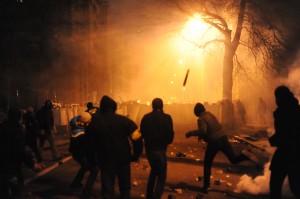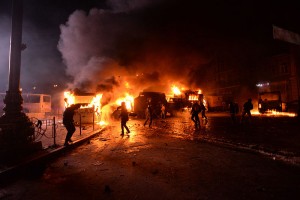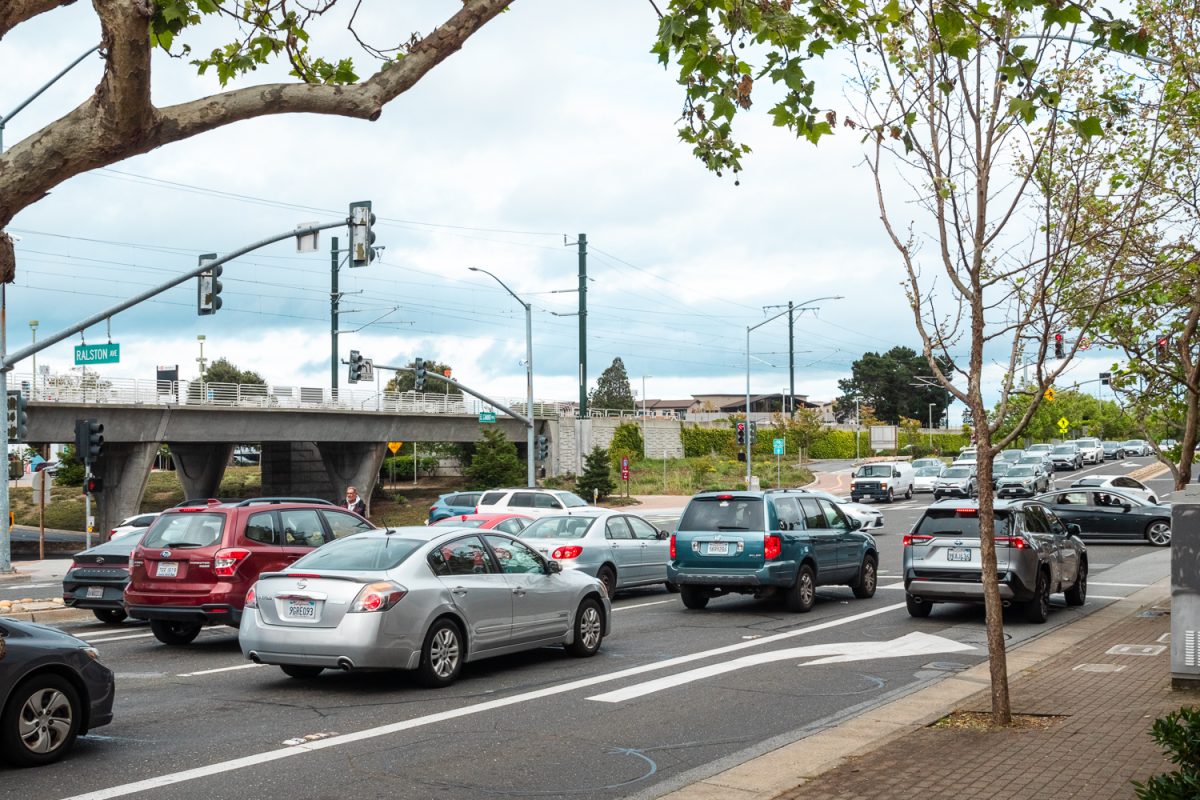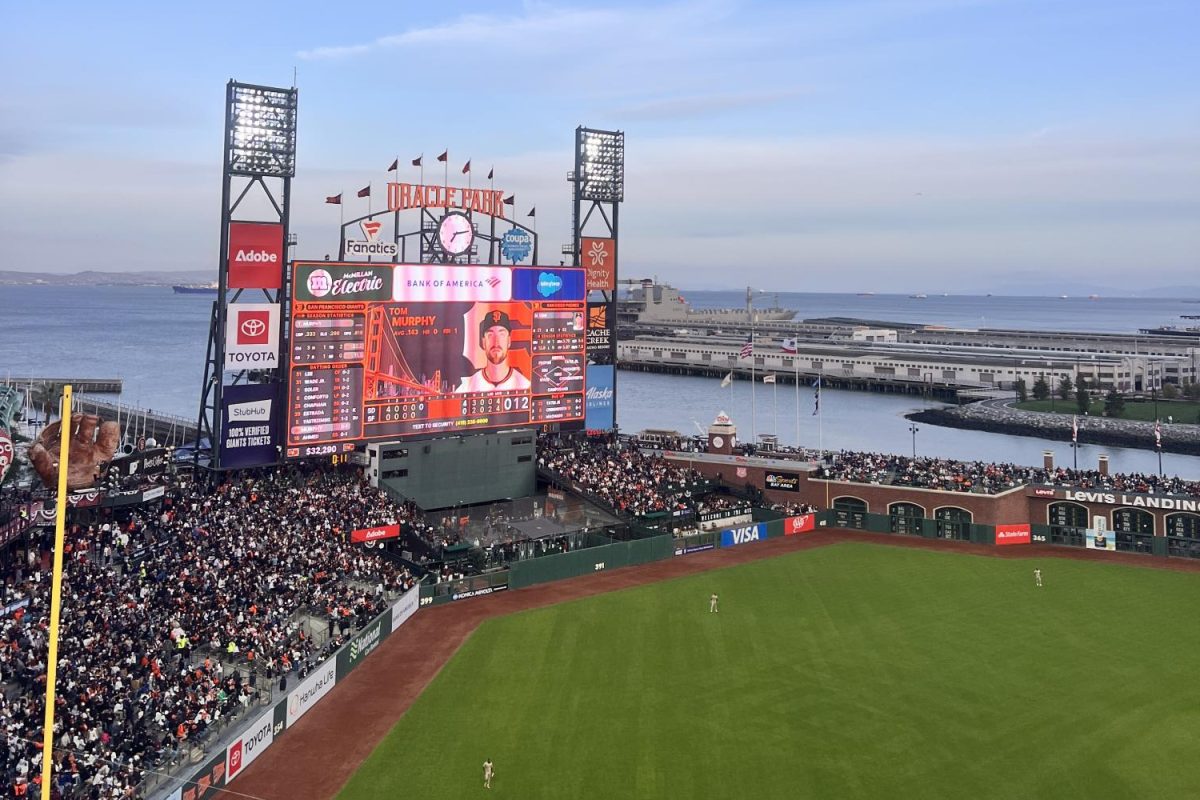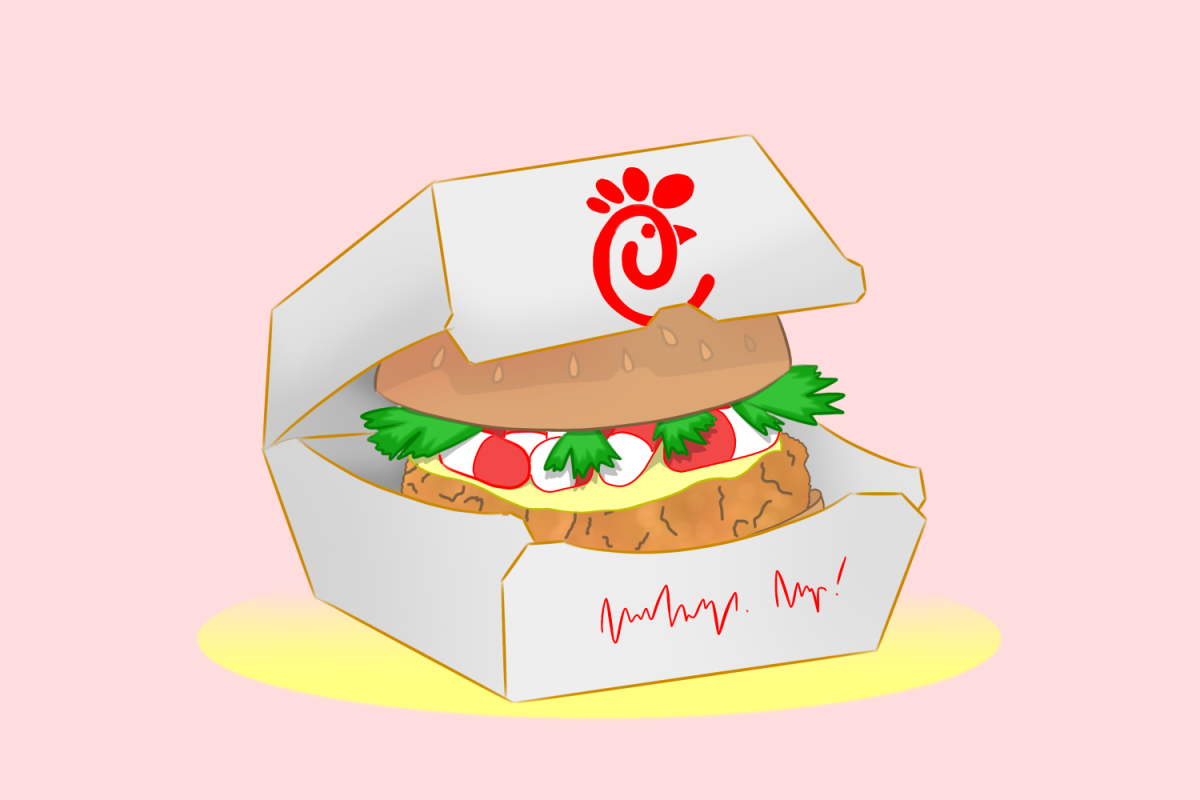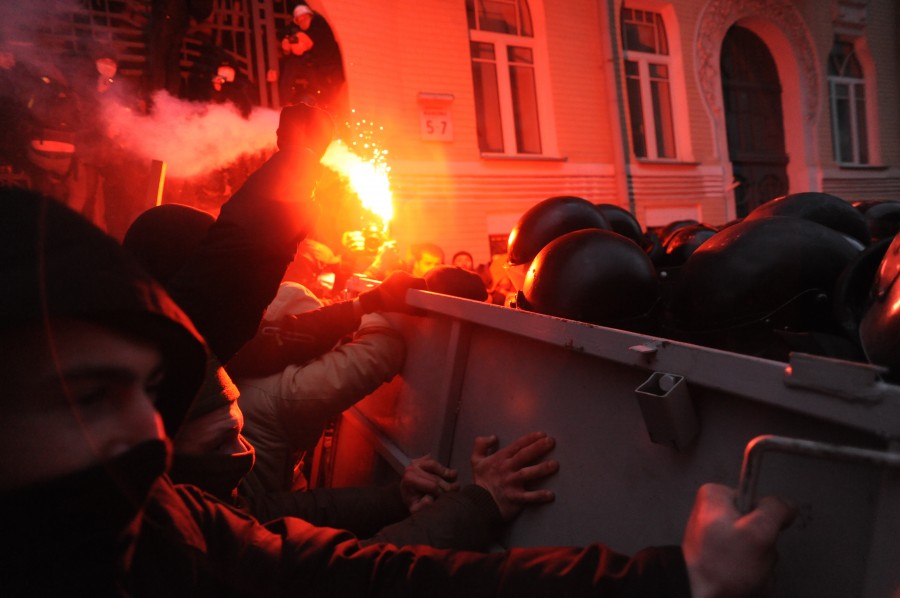The crisis in Ukraine that left more than eighty government protesters dead reached an apparent solution over the weekend of Feb. 22, although concerns over the country’s future still remain.
1) What agreement was reached?
Ukrainian President Viktor Yanukovych held talks with the foreign ministers of three countries from the European Union — France, Germany, and Poland — to reach a deal in hopes of ending the wave of violent protests which have sieged the heart of Ukraine.
The deal signed by Yanukovych and three members of the opposition on Feb. 21 includes:
-
A national unity government installed and a presidential poll held by December. (The presidential poll was later moved up to May 25)
-
The release of former prime minister and Yanukovych’s imprisoned rival Yulia Tymoshenko.
-
The restoration of the 2004 Ukrainian constitution.
-
Constitutional and electoral reform intended to balance the powers of president, government, and parliament.
Carlmont student Toni Lupilin, who is Ukrainian, called the agreement “a step forward for Ukraine’s future,” while noting that things “are still on ice. Anything could happen.”
On Feb. 20, the European Union (EU) announced it would impose sanctions against Ukrainian officials “responsible for violence and excessive force,” reports BBC news.
But that’s not all.
On Feb. 22, Yanukovych was removed from office by the Ukrainian parliament and fled his estate. Some reports claim he was last sighted on the Crimean Peninsula, a pro-Russian area in Ukraine. The acting government has issued a warrant for his arrest on the charges of committing “mass killings of civilians,” according to NBC News.
Ukraine’s parliament named its speaker, Oleksandr Turchynov, as acting president following Yanukovych’s dismissal.
Turchynov later gave a TV address in which he suggested Ukraine would renew talks about closer links with the EU. Turchynov said he was also “open to dialogue with Russia” as long as Moscow respected “Ukraine’s European choice,” according to BBC news.
Anna Shutovska, another Ukrainian Carlmont student, said, “I’m glad that something is finally happening and that they are able to reach some sort of an agreement. However, I don’t trust anything that is going on because there is no guarantee that Parliament and the rest of government will fulfill any of these promises, based on what has happened in the past.”
2) Why have people been protesting?
Back in November of 2013, the former President of Ukraine Viktor Yanukovych rejected a trade deal with the European Union in favor of closer relations with Russia. This decision angered thousands of Ukrainians who desired integration with Europe, and protesters occupied Independence Square in central Kiev, the Ukrainian capital.
The protests evolved into a larger struggle against government corruption and Yanukovych’s rule.
“I believe Ukrainians have the right to rebel in the way they have,” said Shutovska. “The government has been in shambles for far too long. The people deserve more economic opportunity and a better life in general.”
The protests have also revealed Ukraine’s inner division: riots have been stronger in Kiev and western Ukraine, which have more ties to Europe, and less prevalent in the east and south, which is tied to Russian markets.
3) How bad was the violence?
The clashes in Kiev led former Ukrainian President Leonid Kravchuk to warn that the country stood on the “brink of civil war.”
Mostly-peaceful protests had been occurring in Ukraine for about three months. But tensions erupted into violence on Feb. 18, after the Ukrainian Parliament rejected requested changes to the constitution that would reduce the powers of the president, according to BBC news.
Clashes broke out as policemen and riot police attempted to clear the the protest camps in Independence Square.
Live rounds were fired from both sides. Theguardian.com reports protesters armed with “axes, knives, truncheons and corrugated iron shields.” There have also been reports of protesters throwing sticks and stones at police in addition to Molotov cocktails. Photographs and video show barricades made by the protesters set ablaze.
Ukraine’s acting interior minister, Vitaly Zakharchenko, stated that police had been armed with combat weapons. Riot police were seen on video shooting from a rooftop down into the central plaza.
“I think its outrageous that the government is being so repressive and hurting its citizens in such a way,” said Shutovska, and that “beating people and using tear gas” was “completely unacceptable.”
The health ministry’s most recent death count reported 88 people killed and 577 wounded.
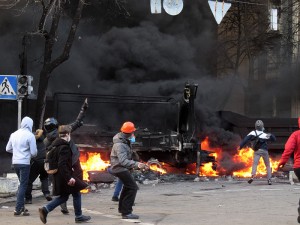
4) Does this mean the crisis is over?
“I definitely know better than to believe that the crisis is over,” said Shutovska. “I won’t be happy until the government starts fulfilling the promises they have made to the people. Its going to take a long time for the country to move past this and reach a place where everyone is satisfied.”
Lupilin said, “While things may certainly have seemed to settle down, it definitely isn’t over. The country is split in half; eastern Ukraine is set on keeping ties with the Kremlin.”
There are still thousands of protesters in Independence Square, according to BBC news.
5) What significance does this hold for the future?
Yanukovych’s decision was widely seen as a symbolic one, and the nation’s violent reaction can also be seen as an example of the post-Soviet Union tug-of-war in Ukraine between east and west.
With Turchynov ‘s pro-European Union goals, Ukraine has now aligned itself much closer with Europe than with Russia.
Shutovska said, “The first step has been taken in order to improve the nation. Hopefully life for Ukrainians will only improve from here, but that will only happen through cooperation and outside help.”
